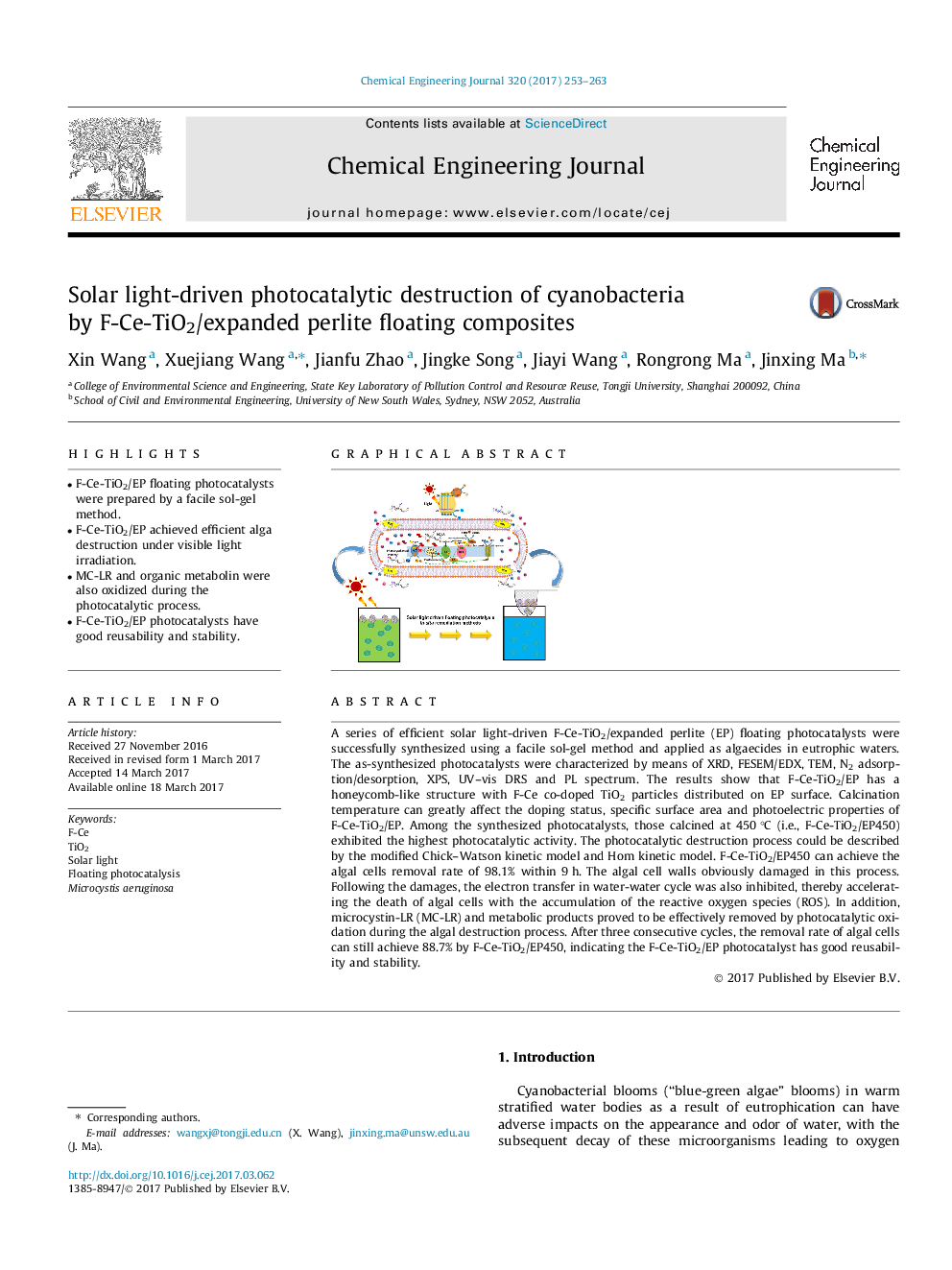| کد مقاله | کد نشریه | سال انتشار | مقاله انگلیسی | نسخه تمام متن |
|---|---|---|---|---|
| 6465931 | 1422958 | 2017 | 11 صفحه PDF | دانلود رایگان |

- F-Ce-TiO2/EP floating photocatalysts were prepared by a facile sol-gel method.
- F-Ce-TiO2/EP achieved efficient alga destruction under visible light irradiation.
- MC-LR and organic metabolin were also oxidized during the photocatalytic process.
- F-Ce-TiO2/EP photocatalysts have good reusability and stability.
A series of efficient solar light-driven F-Ce-TiO2/expanded perlite (EP) floating photocatalysts were successfully synthesized using a facile sol-gel method and applied as algaecides in eutrophic waters. The as-synthesized photocatalysts were characterized by means of XRD, FESEM/EDX, TEM, N2 adsorption/desorption, XPS, UV-vis DRS and PL spectrum. The results show that F-Ce-TiO2/EP has a honeycomb-like structure with F-Ce co-doped TiO2 particles distributed on EP surface. Calcination temperature can greatly affect the doping status, specific surface area and photoelectric properties of F-Ce-TiO2/EP. Among the synthesized photocatalysts, those calcined at 450 °C (i.e., F-Ce-TiO2/EP450) exhibited the highest photocatalytic activity. The photocatalytic destruction process could be described by the modified Chick-Watson kinetic model and Hom kinetic model. F-Ce-TiO2/EP450 can achieve the algal cells removal rate of 98.1% within 9 h. The algal cell walls obviously damaged in this process. Following the damages, the electron transfer in water-water cycle was also inhibited, thereby accelerating the death of algal cells with the accumulation of the reactive oxygen species (ROS). In addition, microcystin-LR (MC-LR) and metabolic products proved to be effectively removed by photocatalytic oxidation during the algal destruction process. After three consecutive cycles, the removal rate of algal cells can still achieve 88.7% by F-Ce-TiO2/EP450, indicating the F-Ce-TiO2/EP photocatalyst has good reusability and stability.
53
Journal: Chemical Engineering Journal - Volume 320, 15 July 2017, Pages 253-263